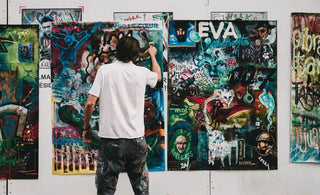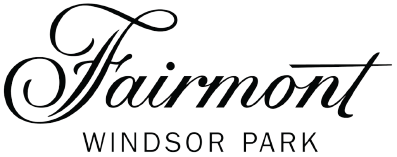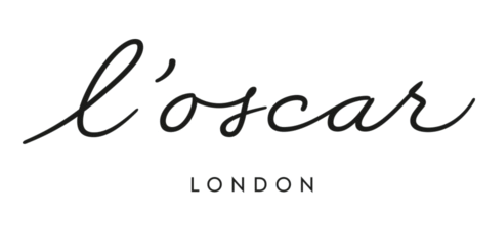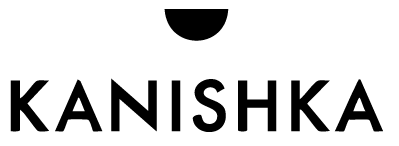
When we’re talking about underrated artists, we’re not talking about singer-songwriters; we’re talking about investing in visual artists - painters, printmakers, sculptors and photographers.
As with any investment, there are risks when investing in art - potentially even more so when investing in art from underrated artists. For example, there is a risk that your investment won’t pay off, and there can be additional costs when investing in art.
Likewise, there is always a risk of destruction of assets. However, investing in underrated artists can be a high-risk, high-reward strategy. Underrated artists are often artists that are yet to be discovered - which means investing in their work could eventually pay off.
Many people have reaped the rewards of this investment strategy. In short - yes, investing in underrated artists can be very lucrative. It is important, however, to conduct thorough research beforehand.
Read on for some things to consider when investing in underrated artists, as well as information on where you can buy art from emerging artists.
Tips for Investing In Work From Emerging Artists
The art market can be difficult to comprehend, and even more difficult to navigate if you’re not experienced in buying and selling art. However, we’re here to help you. Considering factors such as price and market trends, and of course, researching thoroughly can improve the chance of a successful investment.
Invest in Art That You Love
First and foremost, choose art that you enjoy. Choose art that you want to have displayed in your home; something that you love.
If you’re unsure of your personal preference, explore art galleries and art fairs and look out for art styles that catch your eye, whether it be pop art, expressionist art or urban art. Browse the work of similar artists to gain inspiration.
For example, if you enjoy urban art, check out Banksy prints or canvas paintings by Stony. Likewise, if pop art is more your style, look out for Warhol’s work or pieces by Keith Haring.
It’s equally important to choose art that will fit in with the interior of your home or office. Invest in something that you can picture hanging on your wall for years to come - because it may be best to hold on to your investment for a while before you make the decision to sell.
Conduct Thorough Research
Research is key when investing in art. First of all, find out everything you should know about art investments. Then, conduct sufficient market research - this can help you determine the potential market value of the artist’s work.
It can also give you an insight into the demand for the artist’s work too. Consider how the artist is perceived by the media and by art critics, and asses their sales history. This can help you to understand the potential trajectory of the artist.
Be sure to research the background of the artist. Have they created other works of art that have sold for a high price? Do they have an interesting backstory? Are they getting media attention? This can help you make a decision about your investment. If you’re not confident investing in underrated artists, there are other options.
Instead, you could invest in blue-chip art. Blue-chip artists have a history of creating artwork that performs well at auction, making it a safer investment opportunity. Although research is extremely important, it sometimes isn’t enough - you may need to seek the help of an expert in the industry.
Work With an Art Advisor
Whether you’re a beginner in the art investment scene or you’re an experienced art collector, it can be extremely beneficial to work with an art advisor. Conducting thorough research independently is important, but working with an art advisor can hugely increase the chance of a successful investment when investing in up-and-coming artists.
At Grove Gallery, we are home to an excellent art advisory service. Our experts can share their wealth of knowledge, experience and contacts, offering you impartial advice and helping you navigate the art market.
We’ll also guide you through the art-selling process to help you make a profit from your investment.
Consider Your Budget
When making any large purchase, it’s important to set a budget - and art investment is no exception. It’s also important to consider any additional costs. Some added costs when investing in art may include shipping, installation, administration costs, authentication testing and insurance.
If you’re purchasing art at an auction, be sure to consider the buyer’s premium. This can be between 15% and 20% of the hammer price but can vary depending on the auction house. Although we recommend setting a budget and sticking to it, you should prepare to go a little over budget in the instance of unexpected costs.
Likewise, if you see a piece of art that you really love, you may consider going a little outside of your budget. It’s also important to consider the financial risks - there will always be the potential for loss when investing in art, especially when investing in emerging artists.
Be sure to assess your current financial situation and determine the capital you’re able to allocate to your investment.
Where to Buy Art from Underrated Artists
Investing in underrated artists can be extremely rewarding in both financial and artistic terms. There are several ways that you can purchase art created by new and emerging artists.
Art fairs can be a great place to find art from new artists. There are art fairs in many major cities, some taking place across an entire week, and others only taking place for a day.
At an art fair, you can find many pieces of art on the primary art market from both new and established artists. Art auctions can also be a great way to source art from underrated artists on the secondary art market.
Some people prefer to purchase art online - check out this helpful blog exploring online art investment. Ultimately, one of the best places to find art from undiscovered artists is an art gallery. At Grove Gallery, we can help you to generate 8% - 12% on art investment per year, on average. Contact us today to begin your art investment journey.






